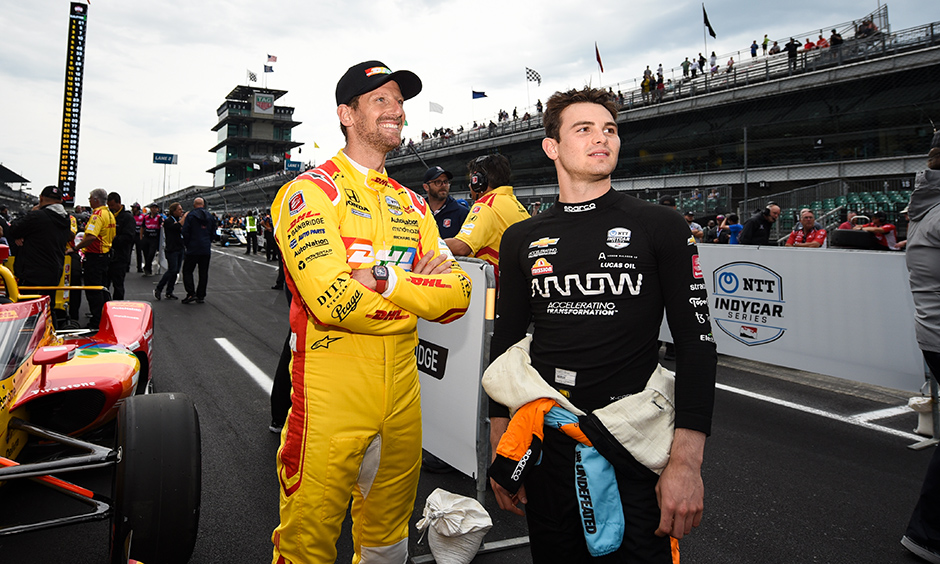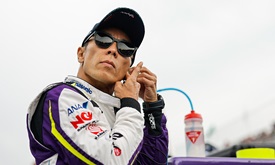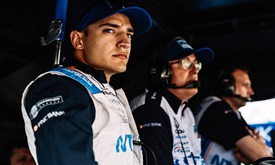Green Flag: PPG Presents Armed Forces Qualifying Day 2
MAY 22, 2022
The first four rows for the 106th Running of the Indianapolis 500 presented by Gainbridge will be set today on Day 2 of PPG Presents Armed Forces Qualifying at Indianapolis Motor Speedway.
On Day 1 of qualifying Saturday, drivers recorded the fastest laps at the famed track in 26 years, dating back to 1996 when Arie Luyendyk set the one-and-four lap track records at 237.498 mph and 236.986, respectively.
Rinus VeeKay is sitting in prime position as the favorite for the NTT P1 Award after he recorded the third fastest four-lap average speed in Indianapolis 500 qualifying history. He turned a four-lap average speed of 233.655 mph in the No. 21 Bitcoin Racing Team with BitNile Chevrolet for Ed Carpenter Racing.
His owner, Ed Carpenter, turned the fastest lap at IMS since 1996 in the morning practice session at 234.093 in the No. 33 Alzamend Neuro Chevrolet.
The action starts at 12:30 p.m. (ET) with a 90-minute practice session for the 12 fastest drivers going for the NTT P1 Award for pole, live on Peacock Premium. Then, PPG Presents Armed Forces Qualifying featuring Top 12 Qualifying and the Firestone Fast Six can be seen live on NBC from 4-6 p.m.
Here’s what you need to know to be ready for today’s qualifying session.
Qualifying, Explained
On Day 1 of PPG Presents Armed Forces Qualifying on Saturday, positions 13-33 were set for next Sunday’s Indianapolis 500 presented by Gainbridge (11 a.m. ET, live on NBC, Telemundo Deportes on Univero and INDYCAR Radio Network).
Rookie David Malukas just barely missed advancing into the top 12 in qualifying, getting bumped from the top 12 by his teammate, two-time Indianapolis 500 winner Takuma Sato. Malukas’ four-lap average speed of 231.607 in the No. 18 HMD Honda was just shy of Sato’s 231.708 in the No. 51 Nurtec ODT Honda.
Stefan Wilson will bring up the field from the rear in the No. 25 DragonSpeed/Cusick Motorsports Chevrolet. An engine issue forced the team to forfeit their spot in the qualifying line. Due to inclement weather, the team never got an opportunity to make a four-lap run, and Wilson will start 33rd with no time recorded.
Now, the 12 fastest drivers in Indianapolis will go all-out for glory and for the chance to be called an Indianapolis 500 polesitter, along with the $100,000 bonus for the NTT P1 Award.
In a new and unique format, it will take two daunting rounds of Indianapolis 500 qualifying to set the prestigious front row for the race. The 12 fastest drivers from Saturday are guaranteed one attempt, and the qualifying order will be based on Saturday’s times, slowest to fastest.
That means Sato will be on track first, while VeeKay will go last.
But it doesn’t stop there. The six fastest drivers will advance to the Firestone Fast Six to determine positions 1-6, including the NTT P1 Award for pole.
The break between Sunday’s Top 12 and Firestone Fast Six will include two laps behind the Corvette Z06 70th Anniversary Edition Pace Car. Traveling at 100 mph, the fan salute for the remaining six entries also will allow air to flow through the air ducts to help cool the engines before the dramatic qualifying laps for pole position. Four-time Indianapolis 500 winner Rick Mears will drive the Pace Car during the fan salute laps.
This Is No Walk in the Park
The four-lap, 10-mile run to qualify for the Indianapolis 500-Mile Race is one of the most daunting challenges in motorsports.
Yesterday, 32 drivers attempted to put together four perfect laps over 16 corners at speeds nearing 240 mph just for a shot at one of 33 spots in the field for “The Greatest Spectacle in Racing.” Even the slightest tick of the steering wheel or a gust of wind can drop a driver’s speed. These drivers must be perfect.
Sato, who won the Indy 500 in 2017 and 2020, was a prime example of that. During his second qualifying attempt of the day, he wasn’t perfect. He edged out of his groove ever so slightly in Turn 2 and brushed the SAFER Barrier.
Even at that, Sato kept the pedal down and put up the 12th fastest time, narrowly advancing into the Top 12 for a chance to go for the Indianapolis 500 pole.
This came after treacherous wind conditions during Fast Friday Indy 500 practice May 20, when drivers were struggling even to put together two consistent laps. Indy 500 rookie Jimmie Johnson scuffed the SAFER Barrier in the No. 48 Carvana Chip Ganassi Racing Honda in Turn 2 during practice in a similar situation to Sato.
So, pay attention to Turn 2 today as the fastest drivers in the field try to find the edge of glory.
It Pays To Start in Front
Aside from the $100,000 check that comes with winning the NTT P1 Award for the Indianapolis 500 pole, starting up front can have huge implications for the race.
While it is a 500-mile race and there is, in theory, plenty of time to make your way through the field, many NTT INDYCAR SERIES drivers have expressed how challenging they expect passing to be on the 2.5-mile oval, placing added importance to qualifying.
Here’s an eye-opening statistic for you: 75 percent of Indianapolis 500-Mile Races have been won by a driver starting in the top 12, including the past six races. Ryan Hunter-Reay is the last driver to accomplish the feat, starting 19th en route to his win in 2014. Helio Castroneves started eighth last year.
The most successful starting position in Indianapolis 500 history is first, with 21 drivers having won the race from the pole. The last to do so was Simon Pagenaud in 2019.
The second most successful starting spot is third (that’s where Sato started in 2020) with 13 drivers finding Victory Lane after starting third.
Second place is the third-best starting position in history, with 11 drivers using the middle of the front row to catapult into the racing history books. The last Indy 500 winner to start second was Juan Pablo Montoya when he won his first Indy 500 start in 2000.
The lowest starting position to produce a winner is 28th. Two drivers have risen from that far in the field – Ray Harroun in 1911 and Louis Meyer in 1936. Starting 28th this year: rookie Kyle Kirkwood.



















